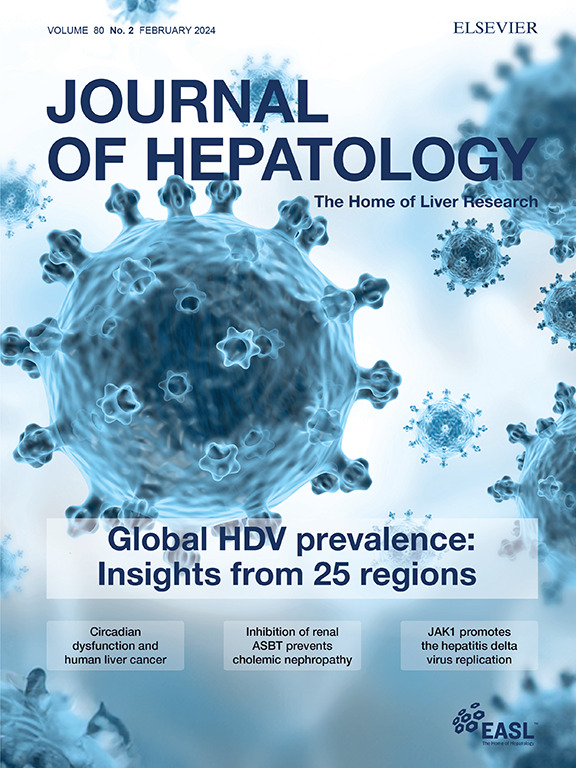Norway rat hepacivirus resembles hepatitis C virus in terms of intra-host evolution and escape from neutralizing antibodies
IF 26.8
1区 医学
Q1 GASTROENTEROLOGY & HEPATOLOGY
引用次数: 0
Abstract
Background and Aims
Norway rat hepacivirus 1 (NrHV) is an attractive surrogate model for evaluating vaccine strategies against hepatitis C virus (HCV). Yet the immune response in NrHV infections remains poorly understood, particularly the role of neutralizing antibodies (nAbs). Here, we explore nAb development and viral evolution during chronic NrHV infection of inbred rats to understand neutralization and viral escape dynamics.Methods
Lewis rats inoculated with the NrHV RHV-rn1 strain were monitored for >52 weeks. Viremia was quantified by RT-qPCR, and NrHV nAbs were characterized by infectious cell culture-based neutralization assays and challenge experiments. Viral evolution was followed over time by whole open reading frame deep sequencing.Results
In most animals, high levels of nAbs appeared after 20 to 45 weeks of infection, coinciding with the emergence of numerous mutations in the envelope proteins. Incorporation of these E1/E2 mutations into cell-culture-adapted RHV-rn1 reduced sensitivity to neutralization by autologous contemporary serum. Five key recurrent E1/E2 substitutions (E209K, R224Q, V275I, T500K, and L569P) were identified, collectively impairing serum neutralization, with E209K in E1 alone proving sufficient to confer neutralization escape. In contrast, NrHV-infected rats devoid of nAbs displayed fewer envelope mutations. Finally, pretreatment of cells with rat serum with high-titer nAbs led to partial control of NrHV-infection, and passive immunization with such sera protected SCID mice from subsequent challenge.Conclusions
This study demonstrates the correlation between nAbs and viral evolution during long-term NrHV infection. The observed humoral immunity for NrHV infection closely resembles that of chronic HCV infection, where late-emerging high-level nAbs fail to clear evolving viral populations, thereby contributing to the evasion of the adaptive immune response. Preexisting antibodies do, however, protect from infection.

求助全文
约1分钟内获得全文
求助全文
来源期刊

Journal of Hepatology
医学-胃肠肝病学
CiteScore
46.10
自引率
4.30%
发文量
2325
审稿时长
30 days
期刊介绍:
The Journal of Hepatology is the official publication of the European Association for the Study of the Liver (EASL). It is dedicated to presenting clinical and basic research in the field of hepatology through original papers, reviews, case reports, and letters to the Editor. The Journal is published in English and may consider supplements that pass an editorial review.
 求助内容:
求助内容: 应助结果提醒方式:
应助结果提醒方式:


